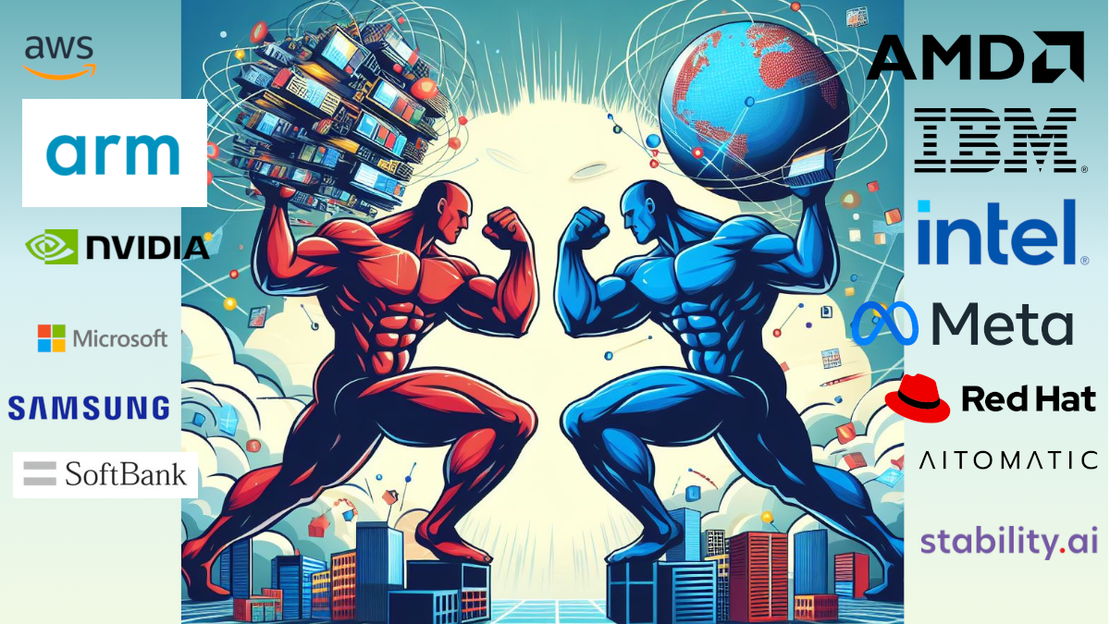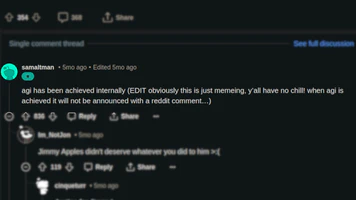
Has the AI Alliance met its match in AI-RAN?
- Justin Riddiough
- February 28, 2024
The world of artificial intelligence (AI) is heating up, not just with technological advancements, but with a brewing battle between two powerful alliances: the AI Alliance and AI-RAN (Radio Access Networks). These groups, each championing distinct philosophies, are locked in a fight to shape the future of AI, with the battleground set at the very “edge” of the network.
Dueling Strategies Emerge
The AI Alliance, a broad coalition of tech giants, startups, and academic institutions, takes a diversified approach. They advocate for open collaboration, fostering a vibrant AI hardware ecosystem and guiding policymakers on responsible AI development. Major industry players like AMD, Intel, and IBM are key members, showcasing their commitment to an open and inclusive AI landscape.
In stark contrast stands AI-RAN, a new alliance with a laser focus on disrupting the global telecommunications industry. Their strategy is much more targeted: revolutionizing telecoms infrastructure by bringing AI to the network’s edge, specifically the telecom operators. This strategic push into the telecoms sector is spearheaded by NVIDIA, AMD and Microsoft, signaling their intent to shake up the established order in 5G and beyond.
The Lines are Drawn: No Man’s Land
The lack of overlapping membership between these alliances underscores the distinctiveness of their approaches. NVIDIA’s exclusive role in AI-RAN serves as a stark dividing line, highlighting the fundamental differences in their philosophies. This extends to the regulatory landscape, where each alliance seeks to shape policies that align with their unique vision. Potential conflicts or collaborations in their regulatory approaches could have significant ripple effects on the broader AI policy landscape.
The Edge Becomes the Battlefield
Here you may be asking. Justin, what are you on about? These are two different alliances with different goals. And you would be right. Hear me out!
Picture AI-RAN pitching their AI-native RAN (Radio Access Network) to telecom operators and governments. They are promising to revolutionize the telecoms industry by bringing AI to the edge of the network. This is a major infrastructure play in one of the most regulated industries in the world. Trillions of dollars are at stake, and the potential impact on society is enormous.
If the AI-RAN alliance achieved this, they would wield immense leverage over invested policy makers who are depending on their efforts. As the driving force behind nations mission-critical hardware, their expertise and recommendations would be oversized. In essence, it could be seen as a policy firewall where all suggestions must be filtered past their vision.
This is where the two alliances’ paths cross. The AI Alliance’s focus on fostering a vibrant AI hardware ecosystem and guiding policymakers on responsible AI development could significantly influence the regulatory landscape for AI in the telecoms sector. The clash of these divergent philosophies could shape the future of AI policy and regulation, with far-reaching implications for the industry and society.
This technology brings processing power and AI capabilities closer to where data is generated, enabling faster response times and improved efficiency. The competitive landscape for AI dominance will likely be significantly shaped by how effectively each alliance leverages AI at the edge.
AI-RAN Vision
Realizing and harnessing the potential of an AI-native RAN
Bringing together the technology industry leaders and academic institutions, the AI-RAN Alliance is dedicated to driving the enhancement of RAN performance and capability with AI. Moreover, we aim to optimize RAN asset utilization, and unlock new revenue streams. By pioneering AI-based innovations in RAN, we aspire to profitably propel the telecom industry towards 6G.
AI Alliance Focus Area
Diversified AI Hardware
Foster a vibrant AI hardware accelerator ecosystem. AI Alliance members will collaborate on the benchmarking, optimization, and adaptation of AI workloads to advance a diverse set of hardware. This work will focus on scalability, platform adaptation, and advanced power, energy, and carbon modeling. Benchmarks and metrics developed for model inference, fine-tuning and energy consumption of large-scale AI workloads will be contributed to the open-source community.
Predicting the Future: Winner Takes All?
While predicting a definitive winner in this clash of titans is challenging, the contrasting strengths and weaknesses of each alliance offer some clues. The AI Alliance’s strength lies in its diverse membership and focus on open collaboration, fostering a broader ecosystem for AI development. AI-RAN, on the other hand, benefits from its laser focus and the strategic advantage of having a powerful player like NVIDIA on board.
The AI Landscape: A Battlefield of Ideas
The clash between the AI Alliance and AI-RAN reflects the broader competition for influence and dominance in shaping the future of AI. This dynamic landscape underscores the importance of diverse perspectives and collaborative efforts in navigating the ethical, technological, and societal challenges posed by this rapidly evolving field. The outcome of this battle will not only determine the trajectory of the AI industry but also have far-reaching implications for the world as we know it.
Authors note: I’m biased towards the AI Alliances approach to AI. I believe in open collaboration and fostering a vibrant AI hardware ecosystem. However I have found no opportunities to collaborate with the AI Alliance in support of the vision. If you have any leads, please reach out to me at https://www.linkedin.com/in/riddiough/ !
Follow AI Models on Google News
An easy & free way to support AI Models is to follow our google news feed! More followers will help us reach a wider audience!
Google News: AI Models

